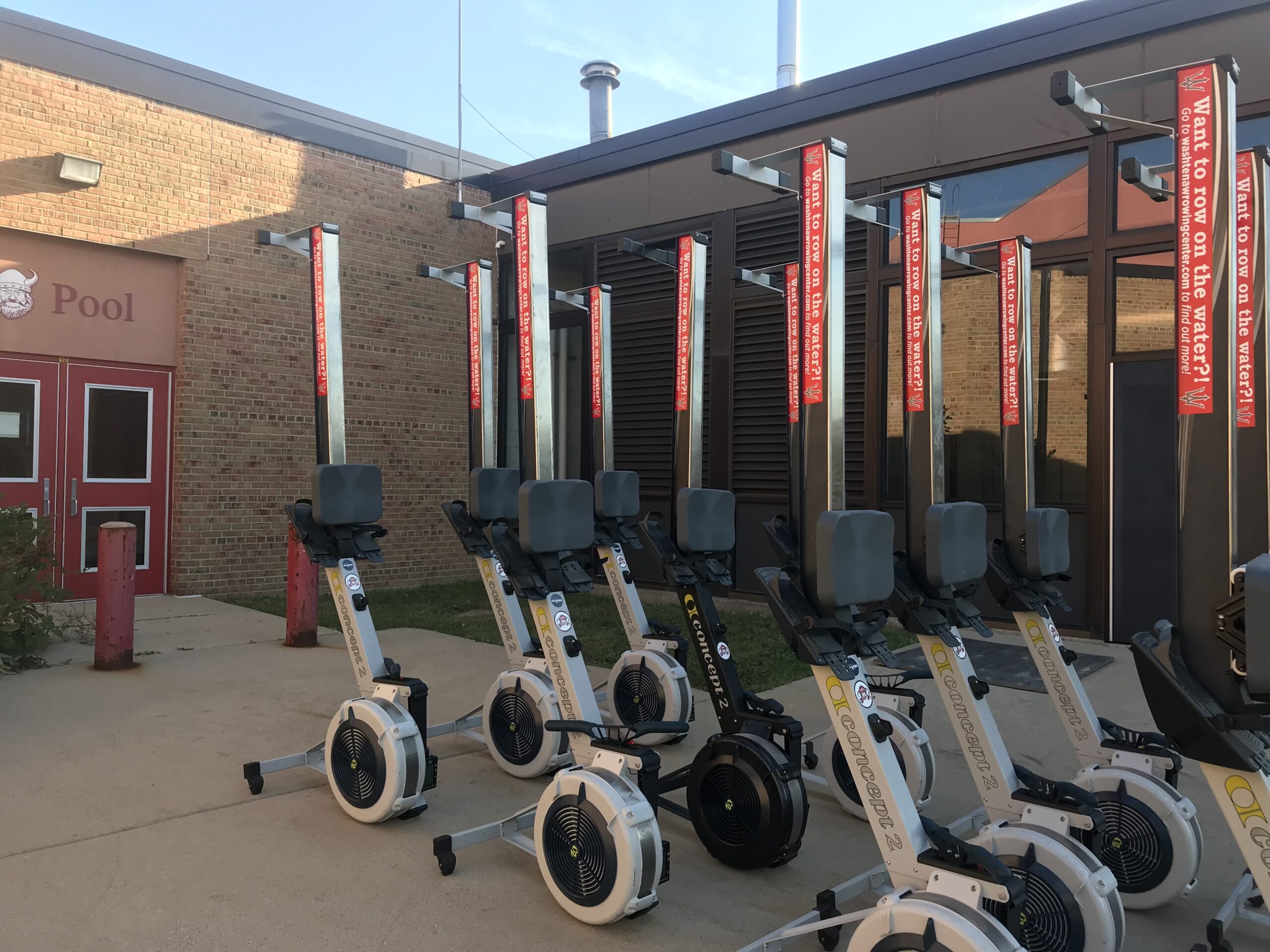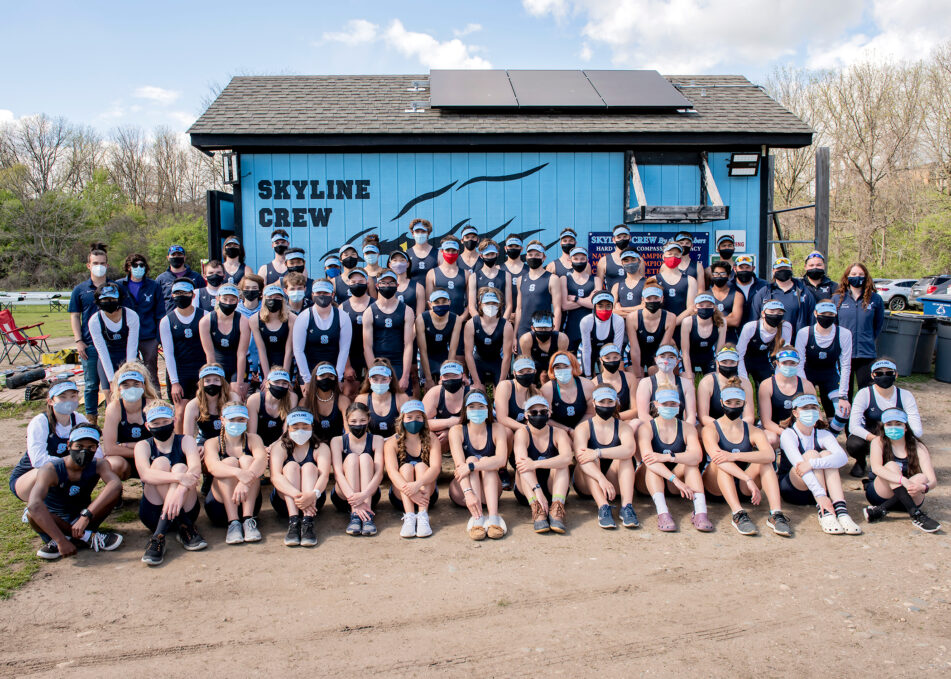Rowing education is back in motion at AAPS
By Jo Mathis/AAPS District News
This is not your parents’ P.E. class.
Thanks to a $40,000 grant, rowing is now taught at all the AAPS middle and high schools on a rotating basis.
Erg Ed is a classroom-based indoor rowing education program running in 13 public school districts across the country.
Skyline, Pioneer, and Huron all have varsity rowing teams as well.
Erg Ed has been a welcome addition to the AAPS PE curriculum and made a large impact on the inclusion space and increasing accessibility to the sport of rowing, says Kit Bennett, Skyline High School’s Director of Rowing, and Women’s Varsity Head Coach.
“We are hopeful this can open doors for more students in the district,” says Bennett, who is also director of the Washtenaw Rowing Center. “It has been great to see the excitement generated for rowing after kids have taken the class, as it is not a traditional sport or always on people’s radar.”
The addition to AAPS’ physical education curriculum began in 2017 when Washtenaw Rowing Center and AAPS put in a joint application for the $40,000 Erg Education Grant—and won.
The George Pocock Foundation then sent the district 20 ergs (rowing machines) and provided multiple professional development training for district staff.
Washtenaw Rowing Center’s role is to support the AAPS staff with further PD’s and to physically deliver the rowing machines to each school for their program period.
A big part of the George Pocock Foundation Grant goals are to connect students in schools via the rowing machines to programs locally that operate on-water sessions, says Bennett.

“The kids are loving it,” says Lindsay Davis-Brady, Skyline Crew, Head Novice Coach. “We, unfortunately, had to take a year and a half break due to COVID, but we’re really excited to see the program back in the schools. The kids seem to get a lot out of it and they’re enjoying learning it along with the other sports that they learn in PE class.”
Each middle school gets to use the rowing machines for about a month while the high schools have them for a couple of weeks at a time, as they are rotated from school to school throughout the entire school year.
Bennett says that 50 percent of eligible women and 17 percent of eligible men currently earn college scholarships in it.
“The expansion of Title IX in the 90s helped women’s rowing specifically as it became the counterbalance to the large rosters of football,” he says. “This in turn generated a lot more excitement for the sport as it presented new opportunities for women and scholarships to college. We are fortunate to have some great programs locally for women and men at the University of Michigan, Michigan State, and Eastern Michigan.”
He says he loves to see rowing integrated into the curriculum given the opportunities it can provide long-term for AAPS students.
“But we are also passionate about the Long Term Athlete Development (LTAD) model,” he says. “This focuses on exposing younger students to a large number of different sports and activities creating long term kinesthetic literacy—something AAPS does a great job with.”
Prior to COVID, AAPS was approved to implement an end-of-year middle school-wide indoor rowing competition with the focus on relays and fun, so it’s hoped that can happen in the spring.


























